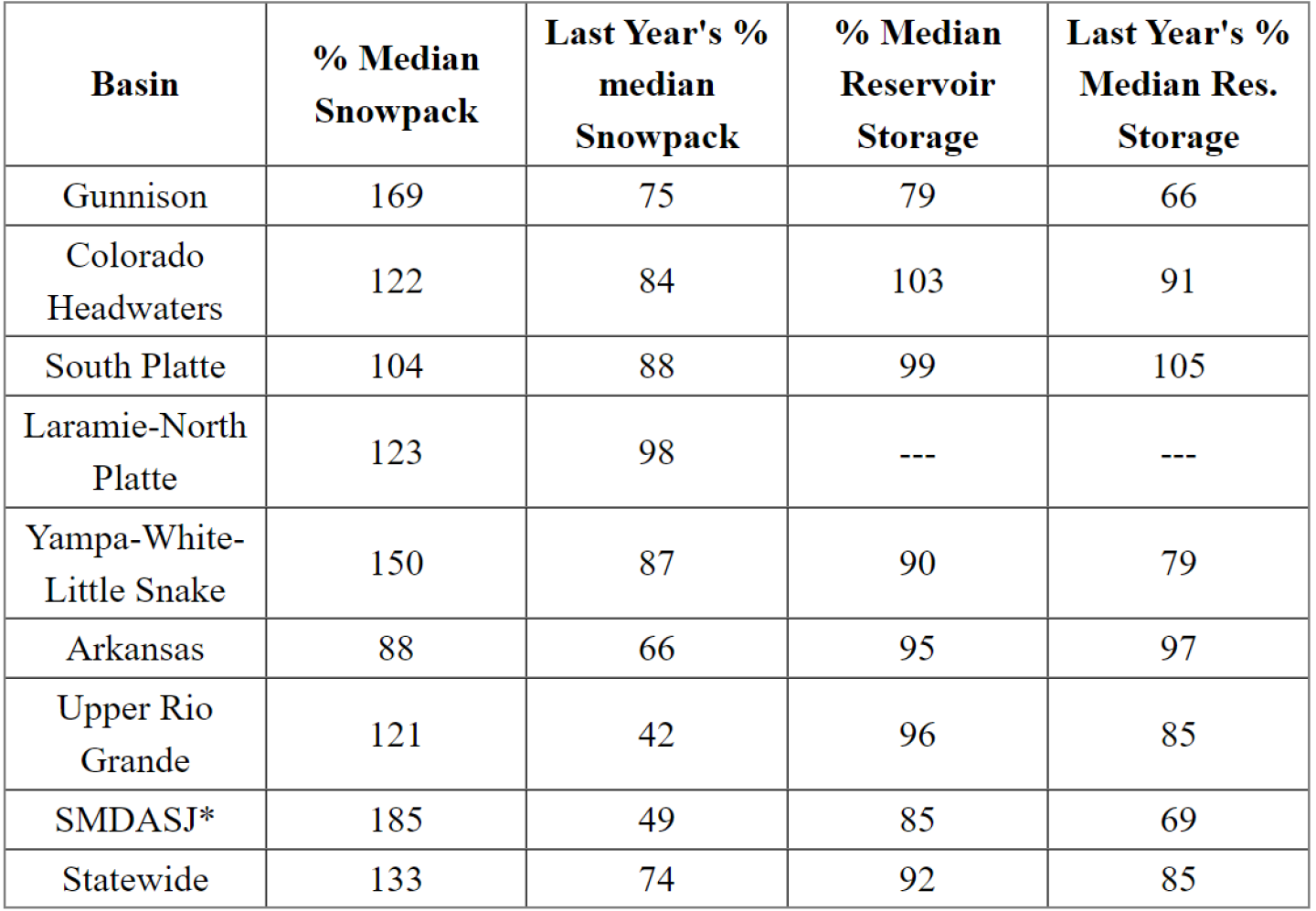South Platte River Fishing Report From Deckers to the North Fork
Summary
The North Fork of the South Platte is Brown Chocolate Mud resulting in faster than normal runoff from Geneva Creek and other surrounding tributaries. At the South Platte Hotel leading into Stronia Springs Reservoir. Its, clear and fast to the South Fork. Water is running fast so look for pocket water. It's an exciting time in the Deckers corridor right now. Cheesman Reservoir has been spilling for a week and we have seen some big water in the Deckers area.
We expect to see high flows in the area for a little while. Strontia Springs reservoir (downstream of Deckers) is also spilling and there is really nowhere for the water to go. While most anglers would get scared of these high flows, the river has been fishing GREAT. Flows are at 496 and the fish are extremely happy. This increase has put large food sources in play.
Cranefly larvae, stoneflies, worms, and especially scuds should all be on your radar. With all downstream water demand coming from Cheesman for the time being, we do expect the flows out of Cheesman to fluctuate pretty well through spring. Denver Water is predicting flows of at least 400 cfs. through May and into June. The fishing will get tougher in these high flows. Work the edges of the river in the slowest water. Fish will seek those calmer areas of the river. Hatch-specific bugs should still be a focus, but again.Add some big stuff! It has been extremely busy in the Deckers area, especially on weekends. Keep in mind that the whole river fishes well and there are miles of opportunities here. Cheesman reservoir is currently 100% full and spilling. Run-off at higher elevations is also just now starting.
River Flow Rate

Source: Colorado State Water Observation Stations Information
Weather

Source: Weather.com
Notable Hatches and Fly Patterns for June
As per tradition during this season, Midges and BWOs are the go-to flies. While the BWO hatches may slow down with the current flows, don't shy away from including larger food sources in your fly selection. Think about adding patterns like Scuds, Cranefly larvae, and leeches to your lineup. These bigger offerings are sure to catch the attention of hungry trout in the swift waters. Mix them in with your usual smaller flies to present a varied menu to the fish. Keep an eye out for the uptick in caddis activity, indicating the beginning of more insect hatches in the days ahead. With a variety of bugs present in the water, now's your chance to experiment with different patterns and techniques to enhance your success on the river.
Top Choice Fly: Olive Wolly Bugger

Streamers
- Wolly Bugger, Black or Olive Size 8-12
- Slumpbuster Natural Size 6-8
- Baby Gonga, Brown or Grey Size 6-8
Nymphs Patterns
- San Juan Worm, Red or Brown Size 12-18
- Pat's Rubber Legs, Brown or Black Size 8-10
- RS2 (RSII) Grey or Black Size 16-20
Dry Fly
- Blue Wing Olive (Good Luck) Green Size 18-24
- Pale Morning Dun Green Size 18-24
- Griffith Gnat Black Brown Size 18-22
Effective Nymphing Tactics
When nymphing, remember that depth and weight are key players at the moment. Fish might not be in the mood to move much for a meal, so consider getting those flies right in front of their noses. Be persistent, tweak your rig as needed, and focus on your presentation – it's more crucial than the specific flies you're using.
Dry Fly Fishing Challenges
While dry fly fishing may be challenging due to the high flows, anglers can take advantage of this time of year to switch up their tactics and try throwing some streamers. Streamers can mimic larger food sources that fish may be targeting in fast-moving water, making them a great option for enticing strikes during these conditions.
By adjusting your approach and experimenting with different techniques, you may find success in hooking into some big fish that are actively feeding in the turbulent waters of the South Platte River. So, don't be afraid to mix things up and give streamer fishing a try during this exciting time in the Deckers corridor.
Snow Pack Update: Colorado 2024 Front Range

Cheesman reservoir is currently 100% full and spilling. Run-off at higher elevations is also just now starting.
In Western Colorado, lower elevation snowpack was abundant, leading to significant early-season runoff in some basins. This resulted in observed flooding in the Yampa and Dolores basins, with more snowmelt expected. While Western Colorado saw above-normal April streamflow volumes, other parts of the state had different outcomes. NRCS Hydrologist Karl Wetlaufer noted the varying snowpack and streamflow forecasts for the April-July runoff period this year, with some basins expecting below-normal seasonal runoff volumes.
Reservoir storage is improving in basins with deficits, like the Gunnison and the San Miguel-Dolores-Animas-San Juan River basins. It's crucial to monitor forecasts and changing conditions closely in your local area throughout the spring and summer due to the variability in streamflow forecasts across the state. Snowpack statewide peaked on April 8th at SNOTEL sites, marking the start of the primary snowmelt runoff season. Wetlaufer emphasized the importance of monitoring water resources closely during this time of year, as conditions can change rapidly. While abundant streamflow is positive for water supply in the Colorado River Basin, it's essential for all in Colorado to be aware of flood potential and associated hazards.

.png?width=300&height=100&name=Copy%20of%20Rise%20Beyond%20Logo%2012.31.24%20(300%20x%20100%20px).png)
.png)

.jpg)